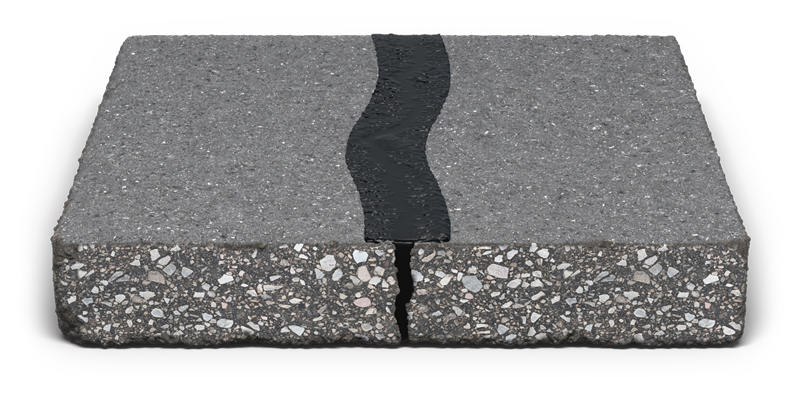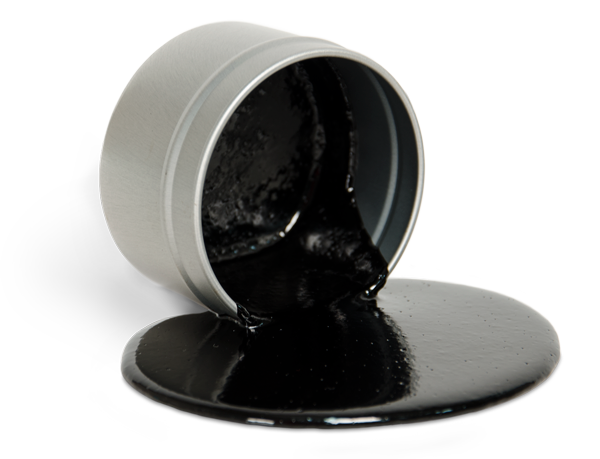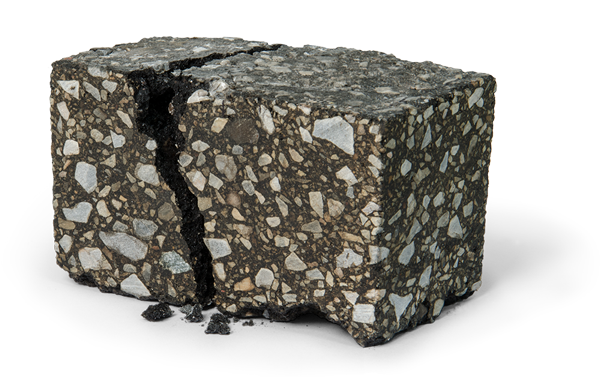View Photo
Asphalt Crack Repair
Natural ground movement and thermal expansion/contraction can cause various forms of pavement cracking. If left untreated, pavement cracks will widen, allowing water to channel and damage the pavement base. A compromised base will quickly lead to fissures, gaps, and pavement deterioration, such as voids, potholes, raveling, and more. But sealing new cracks as part of a regular maintenance program can drastically slow pavement deterioration and greatly extend the service life of your pavement.

Hot-Pour Crack Sealants
Hot-applied crack sealants from Maxwell Products are highly flexible and, when properly installed, form a long-lasting, thermal bond with asphalt pavement. This allows sealants to effectively lock out water and debris, while accommodating the excessive movement that caused the crack to form in the first place. Cold-pour sealants can be easy to install but fail to provide the bond or flexibility required to maintain an effective crack repair.

Natural Expansion Joints
While asphalt pavement is designed to be flexible, ground movement or thermal expansion/contraction cycles may create more movement than the pavement can withstand. This excessive movement will ultimately result in some form of pavement cracking. We can't stop this excessive movement, but we can treat these cracks as "natural expansion joints," sealing out water and incompressible debris and preventing cracks from growing into larger problem areas.

A LEGACY OF QUALITY
Since 1975, Elastoflex has been the Maxwell Products’ workhorse. Designed as a Quality-First answer to industry standard specifications, our original line of sealants has earned a reputation for consistent, value-priced performance.
Working with Hot-Pour Sealants
Crack Preparation
Preparation of the crack is a necessary part of the crack sealing process. Crack walls must be clean and dry to ensure a proper bond. For cracks less than 3/8" wide, we recommended that the crack opening be widened using a pavement router. This will ensure a sufficient material reservoir to accomodate crack movement without compromising the effectiveness of the repair.
Heating
Crack sealants are shipped in solid form and must be heated to application temperature to reach a liquid state. Many equipment brands and models are available and well suited for most any scenario. Maxwell Products sealants are tested and guaranteed to perform well in all major brands and models of melting equipment.*
Application
Heated material is either pumped or poured from the melter and applied either directly into the crack with a nozzle, filling it flush with the surface or gravity fed from the surface using a cup, squeegee, or disk tool, leaving an overband on the surface of the crack. Once the sealants have cooled and are no longer hot or sticky, the area can be opened up to vehicle and pedestrian traffic.
Learn more about crack sealing methods in the solution center.
Solution Center

